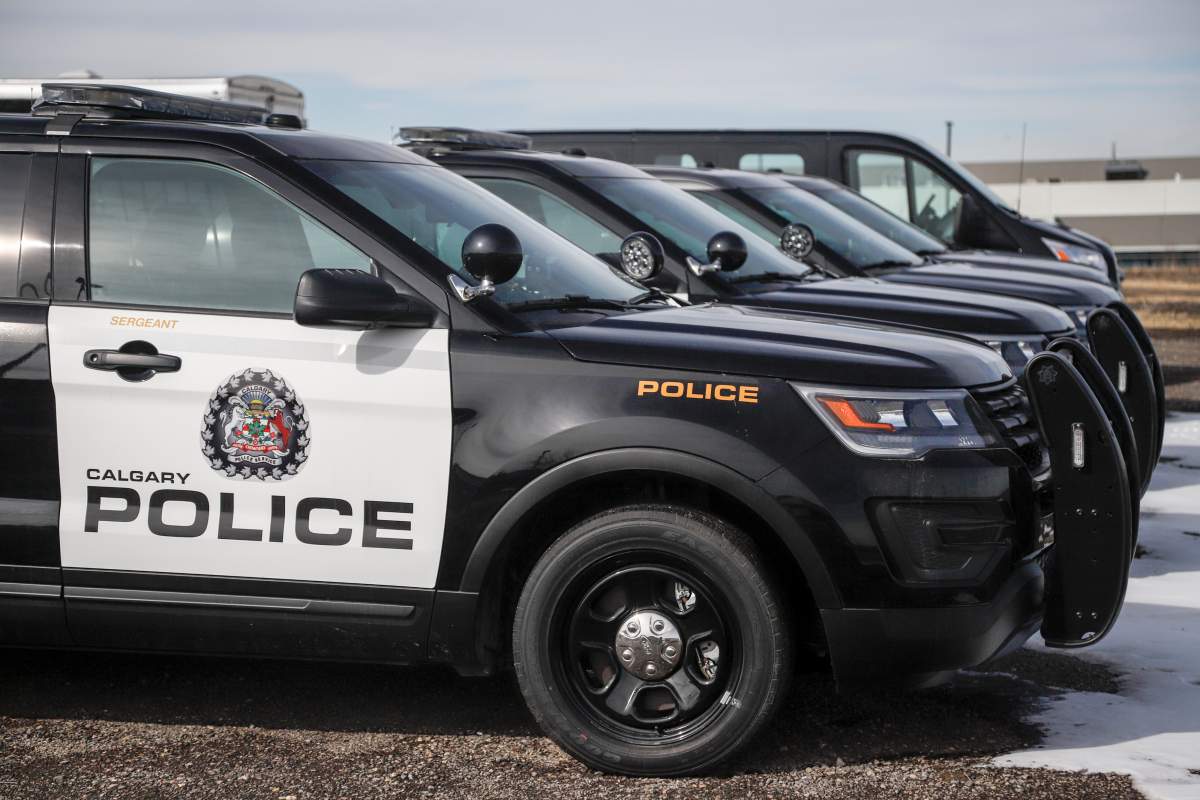When Calgary Police Service officers wear body cameras or have cameras rolling in their cruisers, it creates a “more efficient accountability process and reduces incidents where force is used,” according to two new reports compiled from reviews conducted in late 2020.

CPS has used in-car cameras — which include dash and backseat cameras that record audio and video — since 2012. The evaluations said that in 2020, the contract expired with the company providing in-car cameras. Police said they are committed to finding a new vendor.
The force has used body cameras since April 2019. Officers are expected to manually turn on body cameras whenever they have an interaction with the public but are not required to tell people they are recording.
Both body-worn and in-car cameras “often work together to provide a full picture of all police vehicle-involved incidents,” reads a line from the 2020 In-Car Digital Video Evaluation Report.
‘Enhancing transparency and trust’
CPS said it records more than 53,000 videos with body-worn cameras each month.
When body cameras were launched, police said they had the following goals:
- enhancing transparency, public trust and confidence
- enhancing officer accountability and professionalism
- de-escalating situations and reducing use-of-force incidents
- protecting officers from unfounded allegations of misconduct and increasing resolution efficiency of complaints against police
- improving evidence collection, documentation and prosecution
“In the first year after body-worn cameras were deployed, they contributed (along with other reforms) to our service cutting in half the average time taken to investigate concerns about officer conduct,” police said.
“Eighty-four per cent of conduct concerns are now addressed in less than three months and 96 per cent are addressed within a year.”

Get daily National news
That same year, police said there was an 11 per cent reduction in use-of-force incidents — going beyond handcuffing and “basic physical control techniques.”
While there are other factors that contributed to this reduction, CPS believes the cameras played a role.
“Officers say body-worn cameras have improved their professionalism and communication skills, that they use the camera as a tool to de-escalate high-conflict interactions and think more carefully about how to respond to situations, including use of force,” reads a line from the 2020 Body-worn Camera Evaluation Report.
But some officers are critical of how video from body cameras is used to discipline members, which contributes to more stress, less trust in leadership and lower morale, according to the report.
‘Pleased with the success’
Ninety-five per cent of Calgarians support the use of body-worn cameras, and 94 per cent of officers with cameras use them regularly, police said.
“Our service is the national leader when it comes to body-worn cameras and we know many agencies across Canada are now looking to us for guidance on how to use this tool,” CPS Chief Mark Neufeld said in a news release.
“No question there has been a learning curve with this technology but we are very pleased with the success so far and are fully committed to making the improvements needed to ensure continued success.”
Areas for improvement
The reports suggest improvements:
- clearer policy and training on cameras to ensure more consistent use by officers
- more and better information made available to public on cameras
- front-line officers in specialty areas need to be issued cameras
- more effort to ensure officers and public understand the role footage plays in police conduct investigations
Neufeld said “many improvements are already underway,” including issuing cameras to more officers and improving policy, training and public information available about the cameras.








Comments